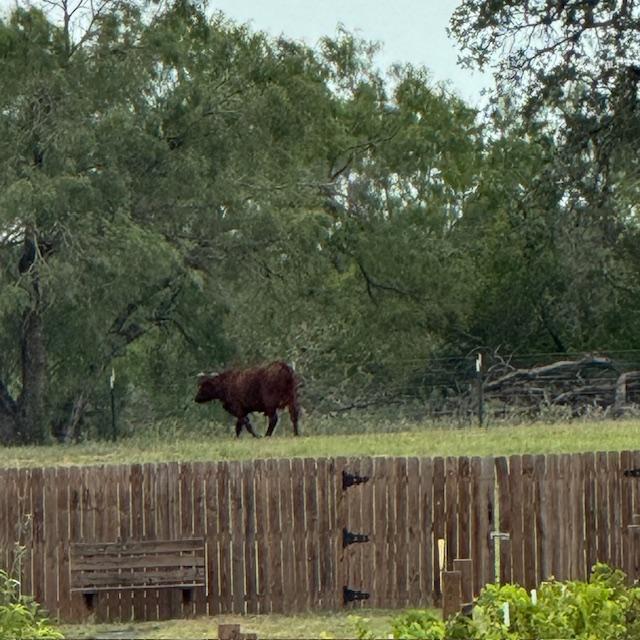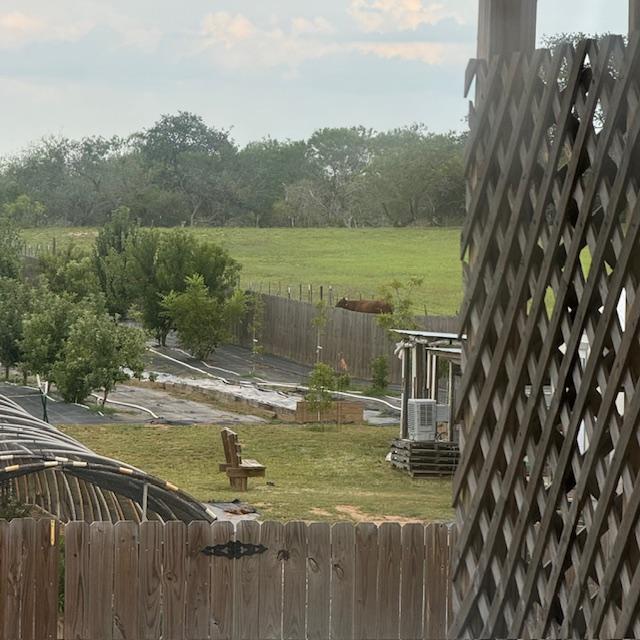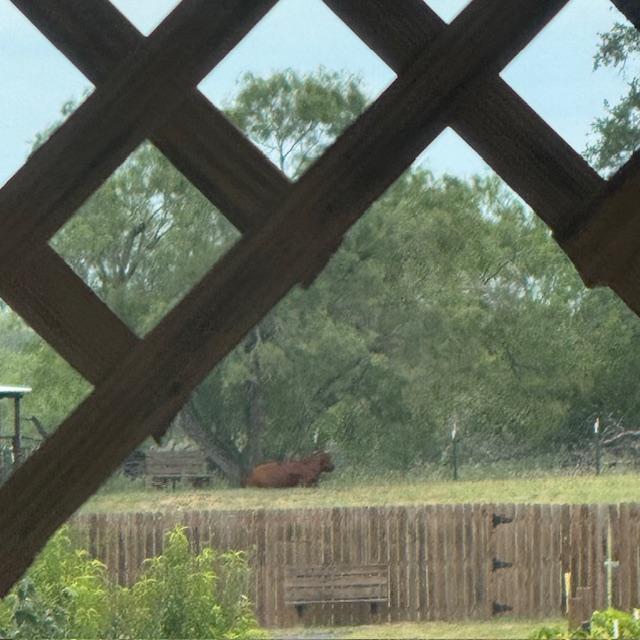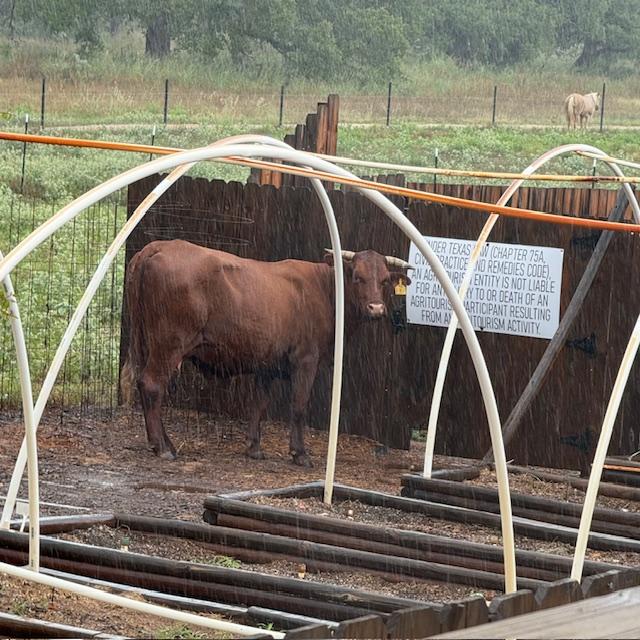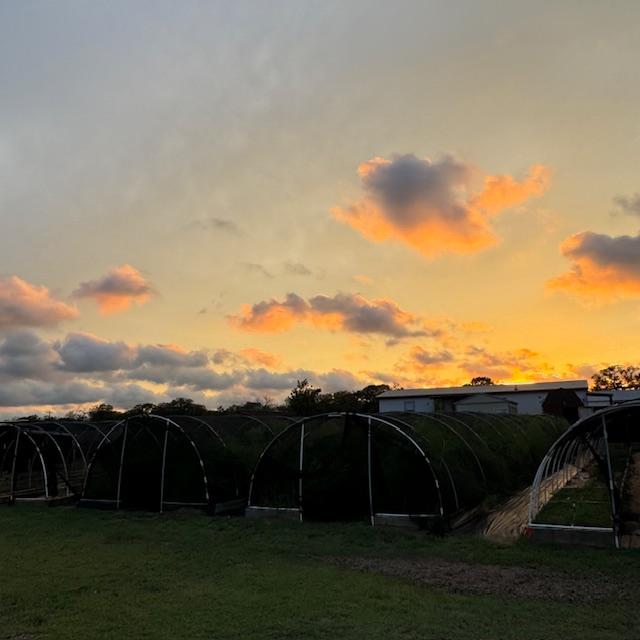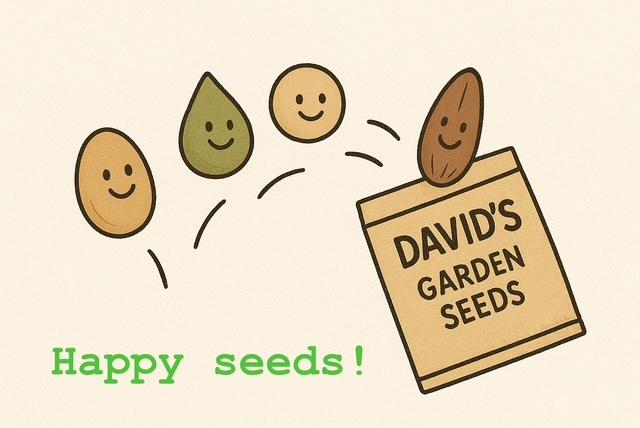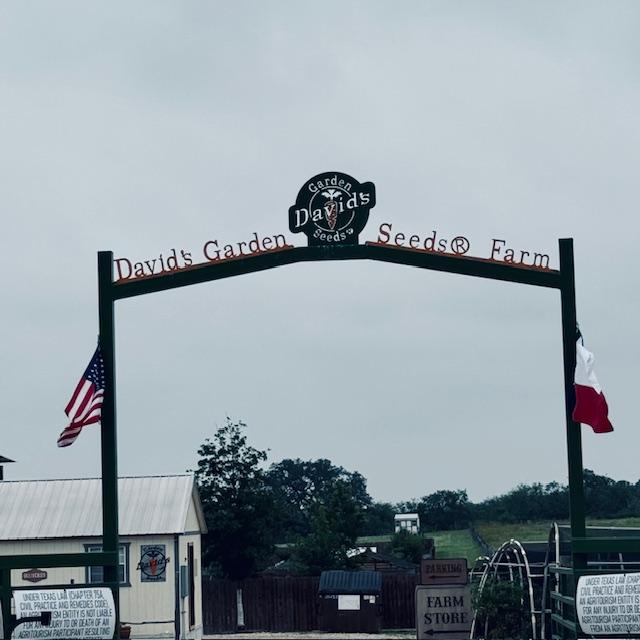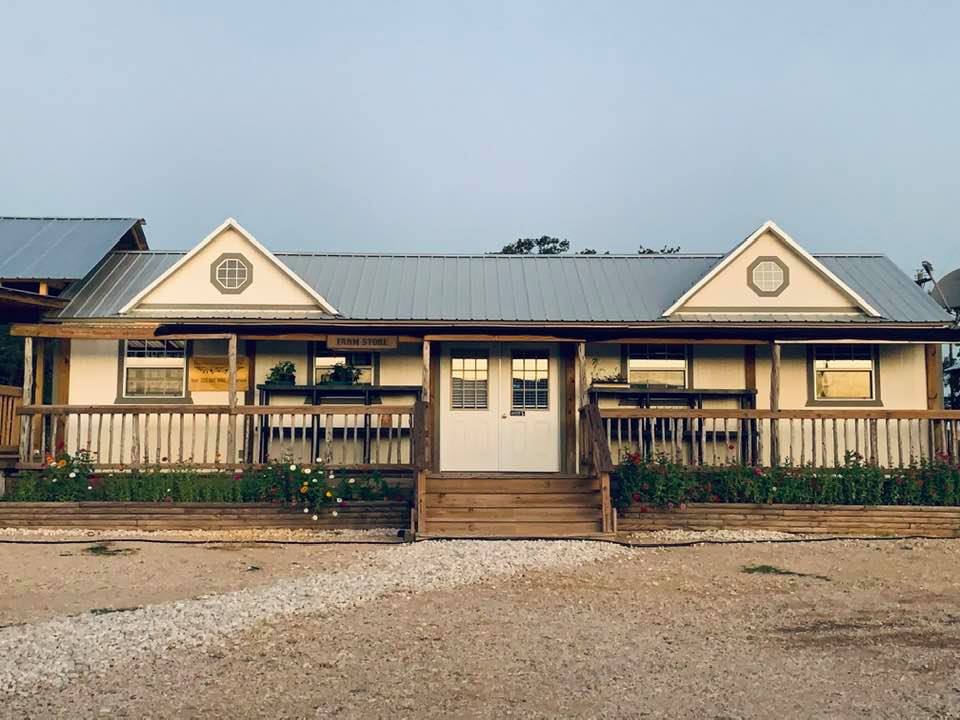The Amaranth Family
The Amaranth family of plants includes some of your favorite vegetables. Let's learn more about it this week. We sell several varieties of seeds from the Amaranth family here.
The Amaranth Family - 7/8-7/14/2024
Monday, July 8, 2024
Good Monday morning! Can you believe the Independence Day weekend is gone? Neither can I! It will be a busy day mailing out all of the orders that have come in over the long weekend. I hope everyone shows up this morning.
Everyone did show up and we worked hard. Hundreds of orders were pulled and mailed but I still have a lot left to mail out! Three sets of customers showed up during the day.
I worked until about 5:30pm but I had a bad headache so I went in with the puppies.
After dinner, I bathed the puppies again. They have been itching a lot. Again, we have been trying for a week now to get them into see the vet but the earliest appointment we could get is for next Monday. Apparently, a lot of folks are unhappy with the new vet where we used to go so they are now going to our new vet, just like us.
Amaranth Family
 This is 1 of the Amaranth plants I started growing this spring. The kernels on the ends are edible and will pop like popcorn.
This is 1 of the Amaranth plants I started growing this spring. The kernels on the ends are edible and will pop like popcorn.Have you ever heard of the amaranth family of plants? If you're a beginner gardener, you may not be familiar with this fascinating group of plants known scientifically as Amaranthaceae. In this article, we'll dive into the world of the amaranth family of plants and give you a good explanation of what makes them unique and how you can grow and use them yourself.
The amaranth family contains over 2,000 species of mostly herbaceous plants and a few shrubs and small trees. They are found all over the world in a variety of habitats, from deserts to rain forests. Some well-known members of the amaranth family include celosia, cockscomb, globe amaranth, and the grain amaranth.
One of the defining characteristics of amaranth family plants is their inflorescence, or flower cluster. Amaranths typically have dense spikes or clusters of tiny flowers that can be quite showy. The flowers are often bright and colorful, ranging from reds and pinks to oranges and purples.
Another interesting feature of many amaranth species is their edible leaves and seeds. The leaves of some amaranths are eaten as a vegetable, either cooked or raw in salads. Amaranth seeds are highly nutritious and are eaten as a grain. They are gluten-free and high in protein, fiber, and minerals.
In addition to their culinary uses, amaranth plants have also been used for ornamental purposes. Many species have brightly colored foliage or striking flower clusters that make them attractive additions to gardens and landscaping.
Now that you have a basic introduction to the amaranth family, let's explore some specific types of amaranth plants you can grow and how to care for them. In the next section, we'll look at some popular ornamental amaranths.
Tuesday, July 9, 2024
 Here is a photo of the bull that the owner came looking for today. I have no idea why he did not patch up the hole once he took the bull home. A cow soon came over.
Here is a photo of the bull that the owner came looking for today. I have no idea why he did not patch up the hole once he took the bull home. A cow soon came over.Good morning. The puppies ate breakfast very well. They are growing and they now love to eat. I took them outside after breakfast and we walked all over the parking lot and the driveway, even went up the ramp a few times. Then Matt showed up and Trump took off after him. Matt had to pick him up and hand him back to me. They are outside mowing and we didn't want the puppies to get hurt so they are safely inside. Soon, I will take their playpen to work again so they will come with me.
Out in our yard this morning, there is a bull who doesn't belong there.
All of the rain that we were supposed to get from Hurricane Beryl has been postponed. We might get a small amount sometime this week but not the buckets that were predicted last week.
This afternoon, the man who lives behind us came over on his four wheeler. He said he needed to go up in our yard, get his bull, and find where the fence is broken. We do not know his name or how to get hold of him but we said yes. Instead of going up, he went out onto the street and went up in the new property. He could not find the bull or the hole in the fence.
I went back to work. Several hours later, there is no bull in our yard, but now there is a cow. Turns out she spent the night with us, walking around all over the place. We called our neighbor who knows this cow owner but he never answered us. We have no idea how to contact him. I guess the bull found the hole in the fence and left. The cow came over in the evening. I first found her out there about 6pm. She went all over the property.
The guys were cutting the grass up there and the bull got agitated so they had to stop and leave that part of the yard.
Amaranth Family
 The amaranth family plant is at full bloom, swaying gently with the wind. The red-orange clusters of its tiny flowers stand out sharply against the green foliage.
The amaranth family plant is at full bloom, swaying gently with the wind. The red-orange clusters of its tiny flowers stand out sharply against the green foliage.One of the most popular uses of amaranth plants is as ornamentals in gardens and landscaping. There are many species and varieties that are grown primarily for their attractive foliage and flowers. Here are a few types of ornamental amaranths you might want to try growing:
Celosia: Also known as cockscomb, celosia is an annual flower that comes in a range of colors including red, orange, yellow, pink and purple. They have unique, brain-like flower heads that add texture and visual interest to gardens. Celosia is easy to grow from seed and thrives in full sun.
Globe amaranth: Gomphrena globosa, commonly called globe amaranth, is another popular ornamental. It has round clover-like flower heads in shades of purple, red, pink, and white. The papery flowers are long-lasting and are often used in dried flower arrangements. Globe amaranth is a low-maintenance annual that blooms all summer.
Love-lies-bleeding: Amaranthus caudatus is a dramatic ornamental amaranth with long, drooping red flower tassels that can reach up to two feet long. It's an annual that can grow quite tall, up to five feet or more. Love-lies-bleeding makes a bold statement in the back of a flower border or cottage garden.
Joseph's coat: Amaranthus tricolor is grown for its showy multicolored foliage in shades of red, yellow, and green. The leaves are its main attraction and are often used in salads as well as for ornamental purposes. Joseph's coat is an easy to grow annual that can reach three to five feet tall.
To grow ornamental amaranths, start the seeds indoors six to eight weeks before your last frost date. Sow the seeds shallowly and keep them warm and moist until they germinate. Once the danger of frost has passed, transplant the seedlings outdoors in a sunny location with well-draining soil. Amaranths are fairly drought tolerant once established.
Ornamental amaranths make great additions to flower beds, borders, and containers. Their vibrant colors and unique textures really stand out. Try combining them with other annuals and perennials for a diverse and eye-catching display.
In the next section, we'll explore the edible amaranth species and how you can grow them for their nutritious leaves and seeds.
Wednesday, July 10, 2024
 |
Good morning. The cow spent the night with us, walking all around, doing everything but going home. The neighbor still has not called or texted us with the contact information of the owner. I guess we will have to call the sheriff and see if he knows who this man is.
At 8am, the dogs were barking at the front door. I went over there and the cow was walking down the driveway over to the dumpster. Then she started walking around, back up to the top of the hill. David went outside. We still can't get the neighbor. I guess we now have a cow to be afraid of every time we go outside. Fun times. David called the sheriff. Then he thought the cow left so he called and said to cancel it.
Unfortunately, as he went by the front door, I did not have my phone so I could not get a photo. I did grab it and got these.
 |
 |
The cow keeps walking far off and then he comes back. The neighbor finally called at 8:30am. David told him the problem and asked for the name and number of the owner so we could call him direct. No, he does not want us to have his name and number. What? We have lived here for five years now and we still can't have his name? I thought it was weird when he did not introduce himself yesterday. Anyway, the neighbor said he would call the owner.
It is now 9:56am and still no man with a bull trailer or whatever you use to take your bull home. Our gate is now open. I am surprised the bull hasn't trotted out the front gate yet. He has traipsed all over the parking lot and driveway. Will keep you posted if I don't get gored outside walking from one building to another...
It is currently 12 minutes after noon and we are still the proud owners of a brown cow with horns, strutting itself all around our place. No owner. No sheriff. Just a huge cow. Life in the country will be fun they said. No traffic they said. Fun times they said. LOL!
Now, it is 1:15pm. I just went into the kitchen and saw our cow lying down at the top of the property under the only tree that was here when we bought the place five years ago. LOL! When I was a kid and we drove past cows lying down, my father would always say it is going to rain. Well, our cow is now lying down and it is getting cloudy. I wonder if it will.
You won't believe this, but it is now raining! The mailman drove up and I took the bag of mail out and it is actually raining!
I guess the owner is not interested in getting this cow back.
The rain came down a lot harder over the past hour and that brought the cow up to the parking lot. She tried to get into the gazebo and then went over to the generator. Then she stood on the side of the generator looking like she was reading our Agritourism sign. After that, she drank the puddles. Then she was on the move again and finally ran up the hill. I just don't understand why the owner isn't getting over here to collect this cow who has been here for about 24 hours now. David texted the neighbor again to tell the owner. It is hard to get anything done and the internet is down because of the rain.
David called the sheriff again around 3pm. At 4:30pm, I noticed a few four wheeled vehicles in the neighboring pasture. I went out to the back deck and there were also two men on foot. At the top of the hill, the cow was running. I watched until they chased the cow through the magical hole in the fence. Then the men went to the fence and were there for a while. I am hoping that they fixed the hole in the fence.
 |
 |
 |

Once they left, the rain really picked up. I started making dinner and it just poured. It finally finished somewhere around 7:30pm while we were watching Gordon Ramsay. I went out to look at the rain gauge. We got three and 1/8 inches!!! We never get rain like that. It was great.
 Look where the orange ring is--above three inches! I emptied this early this morning before any rain.
Look where the orange ring is--above three inches! I emptied this early this morning before any rain.Amaranth Family
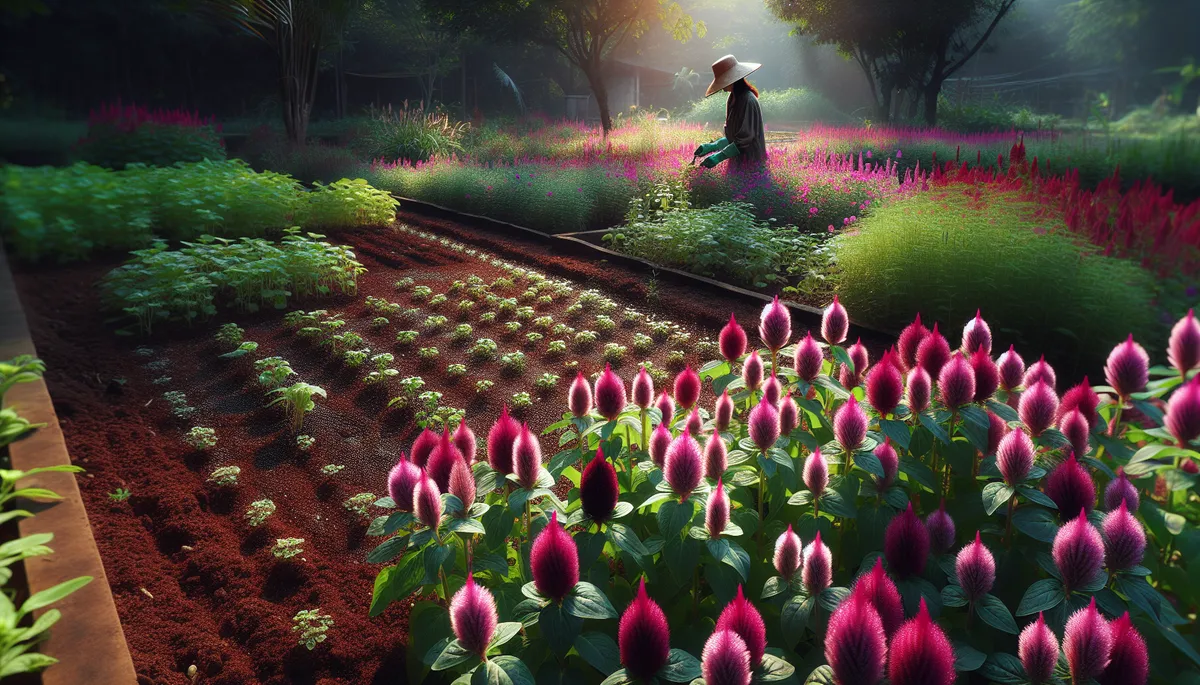 Multiple patches of amaranth plants at various stages of growth. The vibrant pink and magenta hues of the amaranth contrast strikingly with the surrounding greenery.
Multiple patches of amaranth plants at various stages of growth. The vibrant pink and magenta hues of the amaranth contrast strikingly with the surrounding greenery.In addition to their ornamental value, several species of amaranth are grown as edible crops. Both the leaves and seeds of these amaranths are highly nutritious and offer a range of health benefits. Here's what you need to know about growing edible amaranths:
Amaranth greens: The leaves of several amaranth species, including Amaranthus tricolor and A. dubius, are eaten as a cooked green vegetable. They are an excellent source of vitamins A and C, as well as calcium, iron, and other minerals. Amaranth leaves have a slightly sweet, spinach-like flavor.
We carry the edible Red Leaf Vegetable Amaranth greens.
To grow amaranth greens, sow the seeds directly in the garden after your last frost date. Scatter the tiny seeds on the surface of the soil and lightly rake them in. Keep the soil consistently moist until the seeds germinate. Thin the seedlings to about 4 inches apart once they are a few inches tall.
Amaranth greens are ready to harvest about four to six weeks after planting. You can either pick individual leaves or cut the entire plant back to a few inches above the ground. The plants will regrow for additional harvests. Amaranth leaves can be sautéed, steamed, or added to soups and stews.
Grain amaranth: The seeds of some amaranth species, particularly A. caudatus, A. cruentus, and A. hypochondriacus, are harvested as a grain crop. Amaranth seeds are high in protein, fiber, and essential minerals like iron, magnesium, and phosphorus. They are gluten-free and have a mild, nutty flavor.
Growing grain amaranth is similar to growing amaranth greens, but you will need to let the plants mature fully to produce seed heads. Sow the seeds in late spring after the last frost. Thin the seedlings to about six to eight inches apart. Amaranth plants grown for seed can get quite tall, up to six feet or more.
We carry the following edible grain amaranths:
- Coral Fountain
- Emerald Tassels
- Hot Biscuit
- Love Lies Bleeding
The seeds are ready to harvest when the seed heads have turned brown and dry, usually three to four months after planting. Cut the entire seed head and hang it upside down in a paper bag to catch the seeds as they fall out. Thresh the seeds by rubbing the seed heads between your hands. Then winnow the seeds by pouring them back and forth between two bowls in front of a fan to blow away the chaff.
Amaranth seeds can be cooked whole or ground into flour. They make a nutritious addition to breads, cereals, and other baked goods. You can also pop amaranth seeds like popcorn for a crunchy, nutty snack.
Whether you choose to grow amaranth for its leaves or seeds (or both!), this versatile crop is easy to grow and offers many nutritional benefits. In the next section, we'll look at some tips for storing your amaranth harvest.
Thursday, July 11, 2024
 This was supposed to be a second pond but the hole is not big enough yet. It is full of water after the rain.
This was supposed to be a second pond but the hole is not big enough yet. It is full of water after the rain.Good, wet Thursday morning! Yes, the ground and everything else is still wet! And bonus! There is no cow wandering around. I looked for it while I was out with the puppies. No cow! That cow was huge and intimidating. She could have crashed things without even trying.
David made an egg casserole this morning. We finally found a vet who will see the puppies tomorrow instead of making them wait until Monday. They are scratching a lot. We have been using hot spot and bathing them in calming puppy shampoo but it is bad. Poor babies.
It is now 1:30pm. The mailman just left but brought one return only, no actual mail. We had one customer a little while ago. I am all caught up on orders except for those with missing seeds. See, we had three big sales for three weekends in a row and some folks ordered a lot of multiples, depleting some of the most popular items. We are waiting for those to get here so we can send your orders out. Some customers ordered up to ten packs of certain seeds during the sales.
A customer called me this morning wanting to come out and pick peaches from our trees. Our trees were all picked back at the beginning of May. Now it is way too hot for fruit out here. He laughed at me when I told him that. Our heat out here is no laughing matter!
The air is so humid and nasty feeling but this morning, it was 70° and cool. Right now it is 86°. We are not supposed to get any rain today but there is the possibility of rain tomorrow and Saturday. I sure hope we get more.
USPS rates go up on Sunday so I am going to buy another roll of forever stamps before that. They are going up ten cents a stamp. That is insane. It takes longer to get mail than it has before.
 David's family in the 1960s. Johnny, on the far left passed away today. David is the small boy in the back row. He was so cute.
David's family in the 1960s. Johnny, on the far left passed away today. David is the small boy in the back row. He was so cute.This evening, David got a call informing him that his older brother passed away. Something like this is always hard to hear. Just last week, David asked him what he wanted to do about his funeral. His brother stated this their sisters would handle it. Per the one sister, there will be no funeral, possibly a memorial service at a later date. That is all we know.
Amaranth Family
 The amaranth family includes red leaf vegetable amaranth and we carry the seeds so you can plant and enjoy this veggie.
The amaranth family includes red leaf vegetable amaranth and we carry the seeds so you can plant and enjoy this veggie.If you've grown amaranth for its edible leaves or seeds, you'll need to know how to properly store your harvest to keep it fresh and nutritious. Here are some tips for storing both amaranth greens and seeds:
Storing amaranth greens: Amaranth leaves are best used fresh, but they can be stored in the refrigerator for a few days. Wash the leaves thoroughly and spin them dry in a salad spinner or pat them dry with a clean towel. Place the leaves in a plastic bag or container with a damp paper towel to help maintain moisture. Store the container in the crisper drawer of your refrigerator.
Amaranth leaves can also be frozen for longer storage. Wash and chop the leaves, then blanch them in boiling water for two to three minutes. Drain the leaves and immediately plunge them into ice water to stop the cooking process. Drain again and pack the leaves into freezer bags or containers, removing as much air as possible. Frozen amaranth greens will keep for up to six months.
Storing amaranth seeds: Amaranth seeds are very small and can be tricky to store. It's important to make sure the seeds are completely dry before storing them, as any moisture can cause them to mold or spoil. After threshing and winnowing your amaranth seed harvest, spread the seeds out on a baking sheet and let them air dry for a few days.
Once the seeds are dry, transfer them to airtight containers such as glass jars or plastic bags. Label the containers with the date and variety of amaranth. Store the containers in a cool, dry place away from direct sunlight. Properly stored amaranth seeds can keep for several years.
You can also store amaranth seeds in the freezer for even longer storage. Place the seeds in an airtight container and store them in the freezer for up to five years. Let the seeds come to room temperature before using them.
By following these storage tips, you can enjoy your amaranth harvest for
months or even years to come.
Friday, July 12, 2024
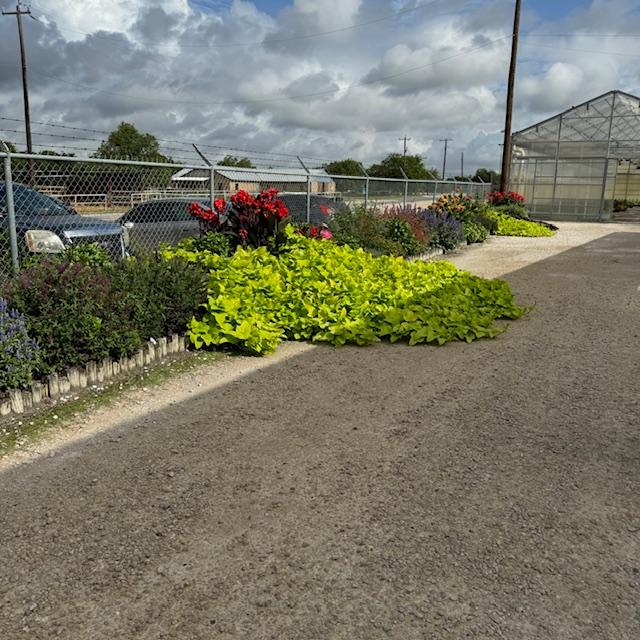 Peterson Nursery is a wholesale garden center that you can order from but you can't go in and shop yourself.
Peterson Nursery is a wholesale garden center that you can order from but you can't go in and shop yourself.Today was a crazy day. We got up wondering if it would rain as there were lots of clouds overhead. We got all of the animals fed. Today was the last day for one of our teen helpers as he will start a school program working with a big company on Monday.
David and I left the farm at 8:30am to go into San Antonio and visit a nursery. Unfortunately, they do wholesale only so we were not allowed to go through and browse at the 26 acres of plants they have. We ended up purchasing plants from them and brought some home. We now have various pepper and tomato plants for sale for the fall garden. In the summer, we have trouble keeping the high tunnel temperatures down enough to grow fall starter plants.
Come by the farm tomorrow for our fall starter plants. We also have Texas grown rice in long grain and jasmine. We have Texas coffees in whole bean or ground in various pecan flavors. We even have a few pecan treats left. Of course, we have farm fresh eggs and lots of seeds to plant in your fall garden. We have some beautiful cast iron skillets and two air fryers for sale. All are brand new and will make wonderful gifts. Come by our Farm Store at 5029 FM 2504 and see what we have. We are open tomorrow from 10am until 2pm.
We took the puppies to the vet this afternoon. The vet says they are at least eight weeks old because they have full sets of teeth. Even he was amazed at how small they are. They think the puppies are catahoula leopard dogs. I had never heard of this breed. They got their first shots. They have worms so we started them on medicine to get rid of them as well as skin infection medicine. Each puppy weighs just over four pounds.
We got some rain this afternoon, not even a quarter inch.
Amaranth Family
 Amaranth flour spreads across a wooden table. The flour has a fine and smooth texture, and it is made from ground amaranth seeds, which are tiny and bead-like.
Amaranth flour spreads across a wooden table. The flour has a fine and smooth texture, and it is made from ground amaranth seeds, which are tiny and bead-like.Now that you know how to grow and store amaranth, it's time to get cooking! Both amaranth greens and seeds are versatile ingredients that can be used in a variety of dishes. Here are some ideas to get you started:
Cooking with amaranth greens: Amaranth leaves can be used in many of the same ways as other leafy greens like spinach or chard. They have a slightly sweet, mild flavor that pairs well with garlic, ginger, and spicy flavors.
One simple way to prepare amaranth greens is to sauté them with garlic and olive oil. Heat a tablespoon of oil in a large skillet over medium heat. Add a clove or two of minced garlic and cook until fragrant. Add the washed and chopped amaranth leaves and cook, stirring frequently, until the leaves are wilted and tender, about five minutes. Season with salt and pepper to taste.
Amaranth leaves can also be added to soups, stews, and curries. They make a nutritious addition to vegetable or chicken soup. In South India, amaranth leaves are often cooked with lentils or added to stir-fries with other vegetables.
Cooking with amaranth seeds: Amaranth seeds are tiny, but they pack a big nutritional punch. They can be cooked and used in a variety of ways, from breakfast porridge to baked goods.
To cook amaranth seeds, rinse them first to remove any dirt or debris. Then, combine 1 cup of amaranth seeds with two cups of water in a pot. Bring the water to a boil, then reduce the heat and simmer, covered, for about 20 minutes or until the water is absorbed and the seeds are tender. The cooked seeds will have a slightly sticky, gelatinous texture.
Cooked amaranth seeds can be eaten as a hot cereal or porridge, similar to oatmeal. Top the cooked seeds with fresh fruit, nuts, and a drizzle of honey for a healthy breakfast. Amaranth porridge is a traditional breakfast in many parts of Mexico and Central America.
Amaranth seeds can also be popped like popcorn. Heat a dry skillet over medium-high heat. Add a tablespoon of amaranth seeds and cover the skillet with a lid. Shake the skillet frequently as the seeds pop. Once the popping slows down, remove the skillet from the heat and let it sit, covered, for a minute to allow any remaining seeds to pop. Popped amaranth can be eaten as a snack or used as a crunchy topping for yogurt or salads.
Ground amaranth seeds can be used as a gluten-free flour in baked goods. Amaranth flour adds a nutty flavor and dense texture to breads, muffins, and pancakes. It can be used on its own or combined with other gluten-free flours like rice or sorghum flour.
With
so many delicious ways to cook with amaranth, it's easy to incorporate
this nutritious crop into your meals.
Saturday, July 13, 2024
Good morning. Today, we have to take Pamela and Sue Ellen to the vet. I think they are just getting toenails trimmed. It is cloudy again. Maybe we will get more rain.
Sure enough, it started raining lightly all morning. Matthew graciously came over this morning so I went to the vet with David. Pamela and Sue Ellen are a handful when David is not around. We got to the vet office and sat down. David used the bathroom and while he was gone, they called us. I had one horrible time trying to pull Sue Ellen and Pamela into the exam room without David. They did not want to move unless David was there so I literally had to drag them. A few minutes later, David came in and then they behaved.
We got back to the farm and there were two sets of customers. I got the dogs in and then decided to help Matt. Those customers left and more came in until about 1:30pm. Then the mailman came, bringing seeds we have been out of. I counted the seeds out that I needed for orders and I worked until about 3:30pm on them and then went in the house.
I baked a chicken for tonight. While it was in the oven, I saw that President Trump was speaking at a rally in Pennsylvania. I clicked on it to watch it on my phone but it was raining so our internet was out again. A few minutes later, David turned the TV on in the den and said Trump had been shot. I ran in and saw Secret Service pushing him to the ground. Then he came up with a raised fist, yelling, "fight, fight, fight." His ear and face were bloody. They ordered a hit on the man who loves America. God protected him and we are so grateful. A good family man was killed and another person was seriously injured. The shooter was killed but now we won't know details, just like with Kennedy's assassin.
Svengoolie was a replay so we watched James Bond number four, Thunder Ball. We enjoyed our meal and then we had popcorn. I was exhausted and fell asleep so I have no idea what happened. I got up and got all of the dogs out to potty for the night. Then I did the dishes and went to bed.
Amaranth Family
 A variety of amaranth plants; the array of vibrant colors ranging from deep purples, bright pinks and fiery reds to tranquil greens and emerald green leaves.
A variety of amaranth plants; the array of vibrant colors ranging from deep purples, bright pinks and fiery reds to tranquil greens and emerald green leaves.Before we wrap up, let's take a moment to appreciate the rich history and cultural significance of amaranth plants. Amaranth has been cultivated for thousands of years and has played an important role in many different cultures around the world.
In ancient Mesoamerica, amaranth was a staple crop of the Aztec, Maya, and Inca civilizations. The Aztecs called amaranth "huauhtli" and used it in religious ceremonies as well as for food. They believed that amaranth had sacred properties and would mix amaranth seeds with honey and human blood to form idols that were eaten in ritual ceremonies.
When the Spanish conquistadors arrived in the Americas, they banned the cultivation of amaranth because of its association with indigenous religious practices. As a result, amaranth cultivation declined in many parts of Central and South America, although it did not disappear entirely.
In other parts of the world, amaranth has also been an important crop for centuries. In India, amaranth leaves are a popular vegetable and are often cooked with spices like cumin and coriander. In East Africa, amaranth leaves are a staple green vegetable and are often cooked with peanut sauce.
In recent years, amaranth has experienced a resurgence in popularity as a "superfood" due to its impressive nutritional profile. Amaranth seeds are high in protein, fiber, and minerals, and have been touted as a nutritious gluten-free grain alternative.
Amaranth has also been the subject of scientific research for its potential health benefits. Some studies have suggested that amaranth may help lower cholesterol levels, reduce inflammation, and even have anti-cancer properties. While more research is needed to confirm these potential benefits, it's clear that amaranth is a nutritious and valuable crop.
As a beginner gardener, growing amaranth can be a fun and rewarding way to connect with this fascinating plant's history and cultural significance. By cultivating amaranth in your own garden, you can appreciate its beauty, nutritional value, and the role it has played in human societies for thousands of years.
Sunday, July 14, 2024
Today was a quiet day. The sky has been overcast for the entire day but we have not had any additional rain. I spent much of the day filling the old orders that were waiting for seeds we ran out of.
The puppies are starting to itch less and let their skin heal up. They have now had three doses of their antibiotic.
We did not leave the farm. I wrote a newsletter letting folks know that we will be having our own Prime Days to correspond with Amazon's Prime Days. We will be having a 35% off sale on all seeds on Tuesday and Wednesday, July 16 and 17. Fifteen years ago, we started our company by selling on Amazon. We still sell there today, but not at the level we used to. There is a lot more competition there now. Most of our sales are on our website today.
Amaranth Family
In conclusion, the amaranth family of plants is a diverse and fascinating group that offers many benefits to beginner gardeners. From ornamental flowers to edible leaves and seeds, amaranth plants are versatile and easy to grow.
We've covered a lot of ground in this article, from the basics of amaranth biology to specific tips for growing, harvesting, and using different amaranth species. We've also explored the nutritional benefits of amaranth and some delicious ways to cook with both the leaves and seeds.
Growing amaranth can be a great way to add some color and variety to your garden while also providing a nutritious food source. Whether you choose to grow amaranth for its ornamental value or for its edible parts (or both!), this ancient crop is sure to be a rewarding addition to your garden.
One of the great things about amaranth is how easy it is to grow from seed. With just a little bit of space and some basic care, you can enjoy a bountiful harvest of amaranth leaves or seeds in just a few months. And as we've seen, there are so many delicious ways to use your amaranth harvest in the kitchen.
But beyond its practical benefits, growing plants in the amaranth family can also be a way to connect with the rich history and cultural significance of this ancient crop. From its sacred status among the Aztecs to its importance as a staple food in many parts of the world, amaranth has played a fascinating role in human societies for thousands of years.
Return from The Amaranth Family to Year Five On The Farm
Anything To Share On This Topic?
Would you like to share additional information about this topic with all of us?
Since 2009, over 2,000,000 home gardeners, all across the USA, have relied on David's Garden Seeds® to grow beautiful, productive gardens. Trust is at the heart of it. Our customers know David's Garden Seeds® stocks only the highest quality seeds available. Our mission is to become your lifetime supplier of quality seeds. It isn't just to serve you once; we want to earn your trust as the primary supplier of all of your garden seeds.
Watch Our 2022 TV Commercial!
Sing Along To Our Jingle
♪♫♪♪ ♫ ♪ ♫♪♫♫
♪♫♪♪♫♫
Peppers and peas
And lots of yummy greens
You can't go wrong
With Squash This Long
At David's Garden Seeds
♪ ♫ ♪ ♫
Our New 2024 TV Ad
Please like and subscribe on YouTube and come visit us at our Farm Store! The music on our TV ad was written, played, and sung by our son, Matthew Schulze. You can meet him when you come to the farm. He just might give you a tour. Ask him to grab a guitar and sing our jingle that he wrote.

We are David's Garden Seeds®. If you need great seeds, we've got over 1,200 varieties to choose from.
Subscribe To Mrs. David's Garden Seeds® Newsletter For FREE!
Find out what is going on down on the farm by reading our blog and by subscribing to our free newsletter for all of the information going down at David's Garden Seeds® and on the farm. I love to share helpful information with you. Please let your friends know and y'all come on down for a visit when you get the chance. We would love to meet you!
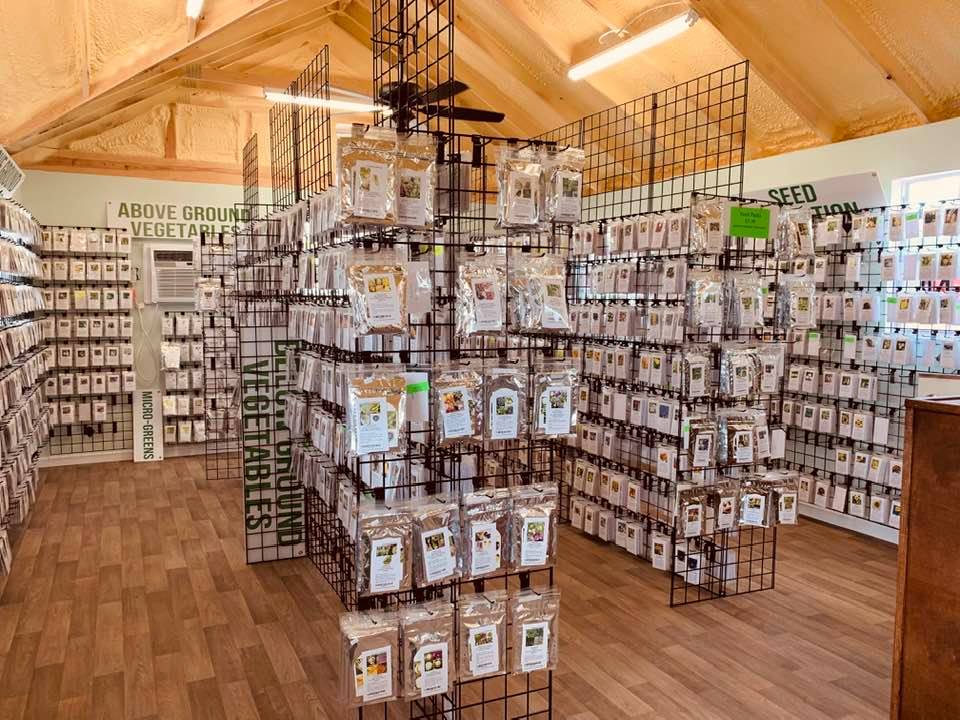
 Our bee hives
Our bee hives Our fish pond
Our fish pond Our chickens
Our chickens Our bunny rabbits
Our bunny rabbits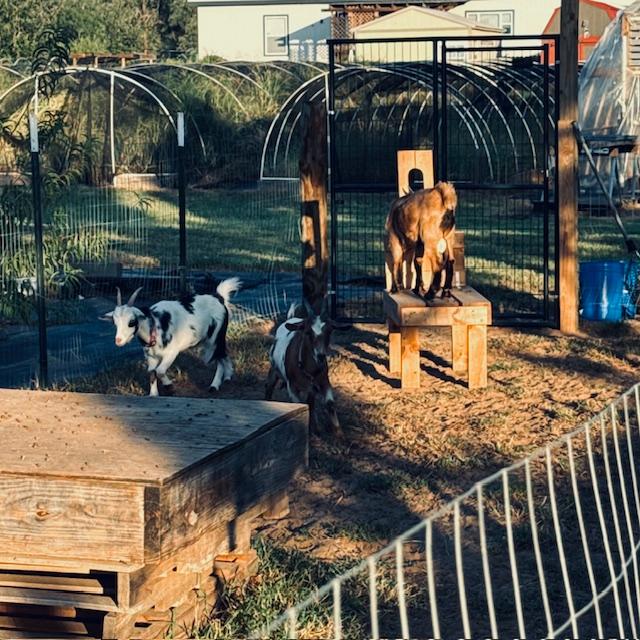 Our Nigerian Dwarf goats
Our Nigerian Dwarf goats A few of our raised garden beds
A few of our raised garden beds Our orchard and hoop houses
Our orchard and hoop houses Inside our high tunnel
Inside our high tunnel Take a selfie at our official selfie spot!
Take a selfie at our official selfie spot! Flowers, bees, and butterflies are everywhere!
Flowers, bees, and butterflies are everywhere!





